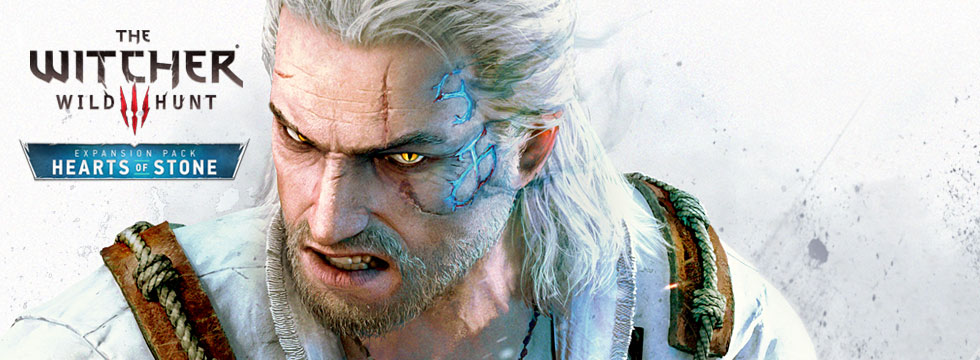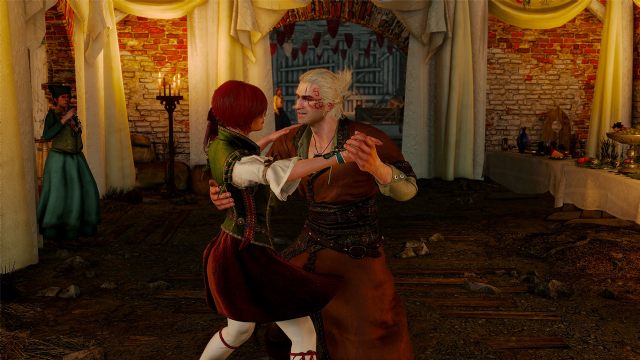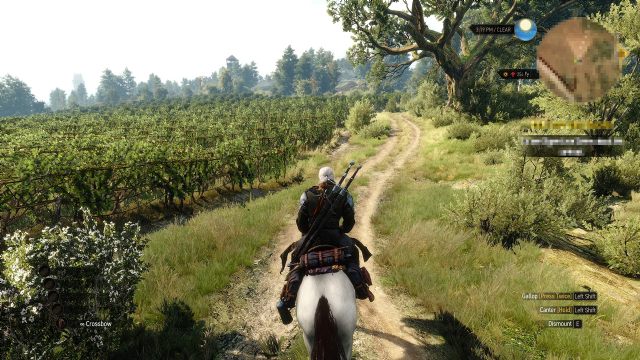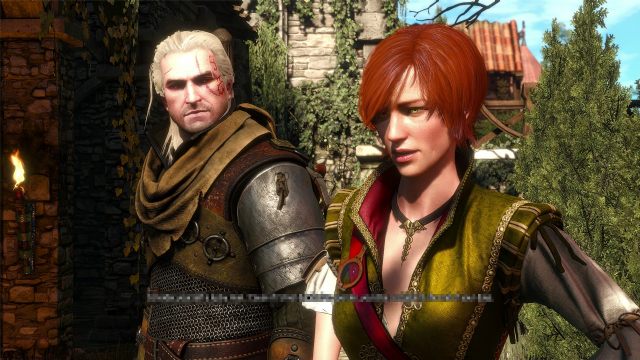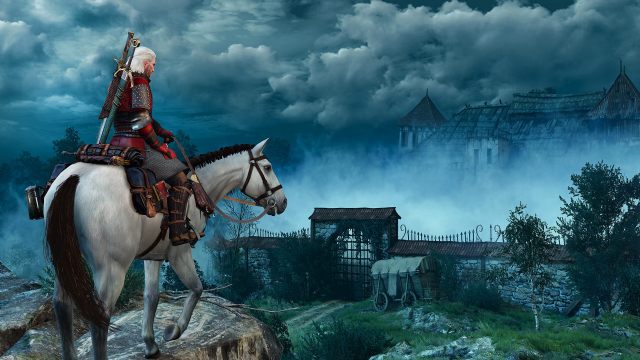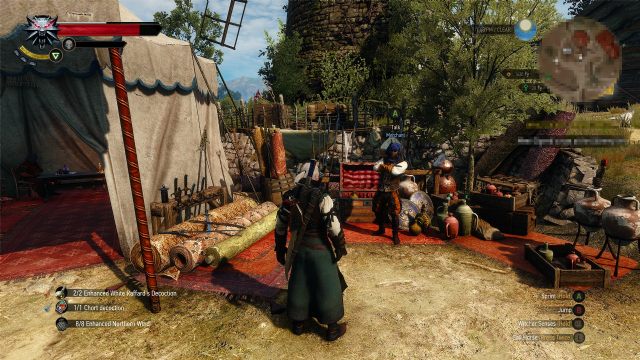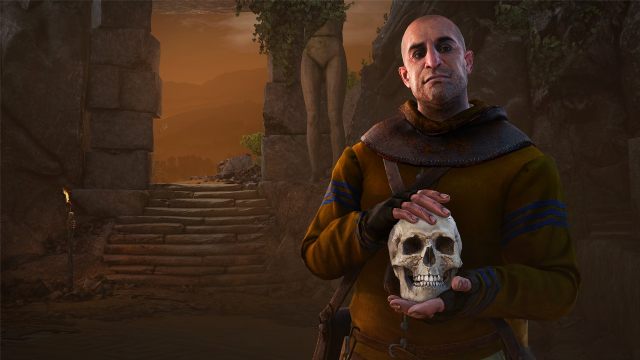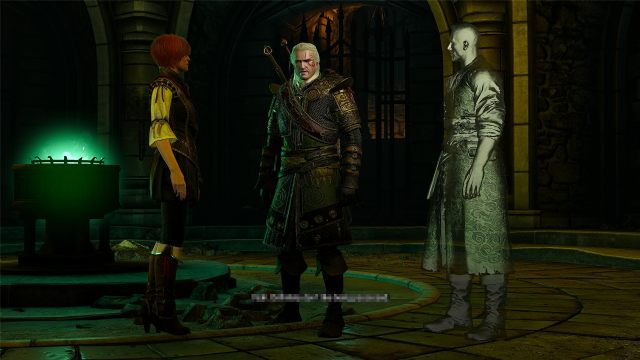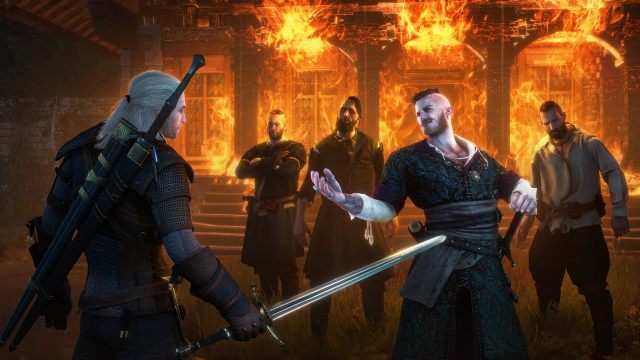The Witcher 3: Hearts of Stone hands-on: Expanding Witcher universe
We spent several hours with the first full-fledged expansion set for Witcher 3 entitled Hearts of Stone. Is the October release enough to make us want to walk in Geralt's shoes once again?
Read the review The Witcher 3: Wild Hunt - Hearts of Stone Review – Almost perfect expansion
This text was based on the PS4 version.
Everyone who played the first Witcher certainly remembers the fourth act. Its specific Slavic atmosphere turned out to be intriguingly exotic to Western audiences. The team from CD Projekt RED certainly kept this distinctive style and its positive reception in their minds when they designed The Witcher 3 and honestly I didn’t expect them to multiply this experience in the first major extension. While assuming the role of Geralt, I went to a countryside wedding, took part in a good village brawl, scared away wild boars, drove pigs, and listened to quotes from Polish literary classics. And all of this in a single quest.
Let’s leave the topic of pigs and wild boars for now, as Hearts of Stone has a bit more to offer. The creators approached the task of designing their DLC as if they were making a completely new game, so in addition to the main storyline we get another dose of side quests, jobs, question marks on the map, and of course locations where all these things can be found. The expansion set literally expands the area of the game, pushing the boundries further into the north-eastern part of No Man's Land and filling out previously inaccessible forests with new places designed from scratch. Personally, I expected the authors to use the already created world and simply top it up with quests, but no one here is cutting corners. Although we set foot in Oxenfurt more than once, most plotlines lead us through mansions, crypts, villages and camps that simply weren't there in the core version of the game.
All these new locations cease to surprise us when it turns out that the structure of the add-on is actually comparable to The Witcher 3. While the main storyline is enough to provide about ten hours of fun, we can squeeze another five from side quests, and the icing on the cake are the thirty-four new question marks on the map filling the area explored by Geralt. "It got big", admits Konrad Tomaszkiewicz, the leader of the project. To make things even more interesting, some of the side quests and minor activities refer directly to the story of the first Witcher. I will only divulge that Hearts of Stone comprises another episode of the history of the Order of the Flaming Rose with which Geralt had to deal at some point.
We can access the content of the expansion in three different ways. Apart from loading an old saved game and starting the marked quest we can also start a regular new adventure, where this task is available from the moment we show up in Velen. The entry threshold is the strength of our opponents, because Hearts of Stone is adjusted to characters of level thirty and above. The third way is a special mode "New game: Hearts of Stone". It's designed for those of you who lost their saves, and allows to generate a version of Geralt with an appropriate amount of experience and gear, and immediately begin the adventure contained in the expansion set without having to engage in the search for Ciri.
The main course, however, is the story arc that is the center of all side content. The construction of the plot in Hearts of Stone resembles that of Andrzej Sapkowski’s Sezon Burz (Season of Storms, the newest Witcher novel not yet translated into English), in the sense that although each subsequent quest is associated with the previous one, they also constitute unique, smaller stories. "In this expansion we focused on making the quests varied and completely different form one another", says Tomaszkiewicz. "We have different emotions and feelings, and they make up one story". Indeed, from what I saw the tasks are not only diverse, but they also seem to have a more intimate tone, thus bringing to mind the short stories from the Witcher universe. Similar associations are also raised by the pace of the story and the way in which the plot develops before our eyes. We start from a simple task to kill a monster, only to become entangled in a strange arrangement shortly after, meet some old friends and, above all, make new ones.

I was happy to see Shani back, especially considering the fact that she jumped directly from the first game to the third. Progress can be seen everywhere. The girl looks great, her outfits were designed with attention paid to the smallest details, and, what's more, she seems to be a little more interesting and more mature than the last time we saw her. The acting is much more dynamic too, and all these elements combined soon make Shani an extremely likeable character. The dialogues involving Geralt were really nicely written, and the entire story of the affair between him and the lovely medic is as unusual as it is plain cute.
The star of this expansion is Olgierd von Everec, a gentleman-robber twirling his red mustache. Upon our first meeting he seems like an interesting character, falling a bit into the archetype of a romantic anti-hero that's easy to like. And hate – or preferably both. "When you meet someone, at first you only go on on what they want to show you", says Karolina Stachyra, one of the main writers of the expansion. "Then you meet their friends and you learn other things about them. Someone says something about them, and it can be a lie or not. One says it's a bad person, and the other remembers how they helped them out." The idea is to create an ambiguous character that we are not able to assess objectively. Depending on how much you learn about Olgierd, and your personal characteristics, you will have to decide how you feel about him. More often than not, the Red Baron from The Witcher 3 is mentioned in the conversation; there, we could develop either contempt or sincere compassion towards him, and it seems that von Everec is similar in this respect. Besides, the fact that I speak about characters from a game as if they were real "people" is the best proof that the Polish team knows exactly what they are doing.
Man of Glass, already known from the core version, returns in the add-on as a full-fledged character, and I have to admit that he works very well in the role of a mysterious, cunning and sometimes quite dark "villain". In this case the word "villain" appears in inverted commas for a reason, because after a few hours of playing it's actually hard to judge who's good and who's bad here, and – as we are used to hearing in the Witcher – nothing is black and white. This is certainly the case with Vitold von Everec, who is, in turn, quite... colorful.
The wedding I mentioned in the very beginning, where we are accompanied by Vitold (Olgierd’s brother), is the most unexpected thing that I had the opportunity to see when playing the expansion. I won’t divulge the details, and if they appear on the Internet before Hearts of Stone launches, I recommend that you stay away from them. This is one of those quests that stay with you for a long time. The creators used a great dose of self-irony, both in terms of character creation and some of the game’s mechanisms (eg. witcher’s senses), and the speed with which this task bombards us with brilliant lines is ridiculously high.
The wedding quest also demonstrates the diversity that I mentioned earlier. In this case we are dealing with a quite large sequence that is virtually devoid of any fighting (the village brawl is quickly over), focused primarily on talking, hilarious interactions and using gameplay elements to support the gags. Quests adjacent to this fragment, however, concentrate on different things, putting more emphasis on action or investigation, or simply using a completely different style and mood.
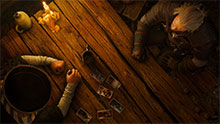
Do you like Gwent? In addition to new cards, the expansion will feature tougher opponents, and... something more. You have to wait for additional information, but fans of the card game should be pleased.
Since I’ve already mentioned action, the fight itself does not seem to differ much from what we know from Witcher 3. A well-developed character, elixirs, dodging, and occasionally life-saving Quen are everything that I needed to overcome opponents at the third difficulty level. Balancing the gameplay, however, is still an open matter. To me, the witcher combat is more about its spectacular character than the difficulty level, and in this respect things had already been much better. In Hearts of Stone we can see many boss fights arranged in such a way that they are really memorable. A clash with a fighter matching Geralt in terms of speed next to a burning mansion in the middle of the night? Check. A fight against a giant frog in a slimy lair? Check. Duels work well with the story, and attacks of opponents significantly different from each other, but, like I said, it affected the overall reception more than the complexity of the clashes. Perhaps it would be a good idea to push the players playing on higher difficulty levels even further?
The DLC also enhances the fighting, or character development, thanks to a new system – runewords. If you have enough money, at any point in the game you can ask an Ofirian wizard to combine rune stones or glyphs into special words. These words translate into effects applied to sword or armor, so instead of the usual bonuses derived from runes filling your pocket, you will get one that’s a little bit more interesting and sometimes able to turn the gameplay inside out. "We designed them so as to provide a difficult choice, because they are all pretty cool", says Tomaszkiewicz about runewords. Marcin Janiszewski, senior gameplay designer, adds that "no armor, weapon, or skill that Geralt possesses can compare to this."

If you begin Hearts of Stone in parallel to the main plotline, the characters appearing in the expansion will comment on some elements of the leading story – and vice versa. Furthermore, the expansion is to enrich the main plotline with some details, primarily related to characters.
For example, one of the more sophisticated words gives Geralt’s sword a unique enchantment immediately after casting a sign. Upon using Quen, blows steal opponents’ life; Axii can stun an opponent standing next to the one who is under attack; Igni gives us a burning blade, and so on. Some of the words affect the comfort of playing, for example prolonging the duration of effect of grinding machines, increasing the effectiveness of food, or allowing us to automatically bounce off shots. Does the fighting thus get easier? "Some of these elements may actually facilitate the game, but they can also give you alternatives." Janiszewski refers to skills that also allow Geralt to bounce off shots, and compares the word exchanging points of adrenaline for health to the effect of Swallow. The new system will allow for greater flexibility when playing with skills, so e.g. if we used a given ability just to prolong the effect of potions, now we can choose a different one, and solve the problem of potions thanks to a runeword, which allows, for example, to make the effect of a potion last longer after each attack made at full health bar. The only thing we need is a large amount of gold, appropriate runes and a sword or armor with three sockets. If your favorite item doesn’t have enough sockets, with enough gold you can get a wizard to make you some new ones.
On the occasion of Hearts of Stone we also learned a few little things about the next add-on entitled Blood and Wine, which will debut next year. Its design will be similar to the first expansion, i.e. it will be a closed story that exists independently of the main plot of the third Witcher. But rather than expanding the boundaries of existing sites, the emphasis is to be placed on a completely new area, or a fragment of the Duchy of Toussaint. The DLC is to start from a plot quest that will unlock another area on the map, as it was done with Skellige or Kaer Morhen. Apparently, we will also see new gameplay mechanics, but the details will be revealed later.
It seems that Hearts of Stone is an expansion that can function as an independent game. It’s a closed tale with its own specific characteristics, distinctive characters and moments, and that is after all what we expect from a DLC of such scale. The first moments of the new story were enough to encourage me to return to the game when it launches next month. If the rest of the content remains on a similar level, I see no reason why fans of the series would choose to ignore this expansion.
